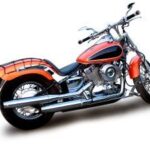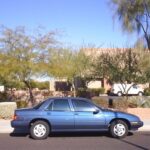Riding a motorcycle is easily one of the most exhilarating activities, but it is still extremely dangerous when compared to driving a car. Choosing a helmet that is right for you is extremely crucial as it protects the most vital part of you: Your head.
It often baffles me to see people riding an expensive motorcycle but they end up choosing a cheap helmet brand in order to “save money” not realizing that the difference could save their life.
Before you go out and buy the coolest looking helmet, here are 8 tips to choosing a motorcycle helmet.
1. Choose The Right Size
Probably the most important aspect of the helmet is its size. When choosing a helmet, be sure to get one that fits your head comfortably and is not too big or too tight. If it feels like your helmet moves around a lot on your head, then it’s probably too loose. Also, keep in mind that even if your helmet is initially tight it will begin to break in as you wear it more.
2. Check The Safety Labels
There are companies that do extensive tests on motorcycle helmets to test their ability to effectively withstand crashes. Nearly all helmets have these certifications so be sure to check that your helmet is both DOT and SNELL certified. While you can get a helmet that is only DOT approved, it is recommended to get helmets that are both DOT and SNELL approved to be certain that you are dealing with a crash approved helmet.
3. Pick The Right Helmet Type
The most common types of helmets are the full face helmet, open face helmet and shorty helmet. The full face helmet is highly recommended as it offers the best protection while the open face and shorty helmets expose your face which can be extremely dangerous should an accident every happen. Of course, the type of helmet you choose will also depend on how you intend to ride your motorcycle.
4. Make Sure The Visor Has Anti-Scratch & Anti-Fog
When looking at a helmet, be sure that the visor has both anti-scratch and anti-fog protection. More and more manufacturers are increasingly offering this option as standard but some don’t. If the helmet you want does not have a visor that has these options, then purchase an aftermarket visor that has these. The last thing you want is being unable to see due to a fogged up or scratched visor.
5. Get The Right Ventiliation Balance
You might be thinking to yourself that you want a helmet with a lot of ventilation so as to keep your head, but helmets with a lot of vents tend to be extremely noisy while riding. The more aerodynamic the helmet, the less noise there will be. Another option is to use earplugs while riding in case the noise becomes too much.
6. Check The Straps
While not nearly as important as the other factors, the straps should also be considered. When fitting a helmet, is it easy to use the chinstrap? Also, most motorcycles will allow you to lock your helmet oto the rear trunk using the chinstrap so be sure that you can easily do so.
7. Is The Inner Liner Comfortable?
Since you’ll be spending a lot of time with your helmet, be sure that the inner liner is comfortable and has a snug fit. Be sure that you can also take easily pull it out of the helmet for when you want to wash it. Also, new helmets typically break in after prolonged use.
8. Design
The only way the design would contribute any safety value would be if it has a reflective design that allows drivers behind you to see their headlight reflection. Regardless, the design and pattern you want depends entirely on you and your preferences.
When choosing a motorcycle helmet, be sure to spend as much time as possible researching the different types and brands while also taking safety into consideration. For new riders, it’s often tempting to pick the coolest looking helmet but this is a huge mistake. Safety considerations should never be taken lightly when choosing a motorcycle helmet to purchase.




